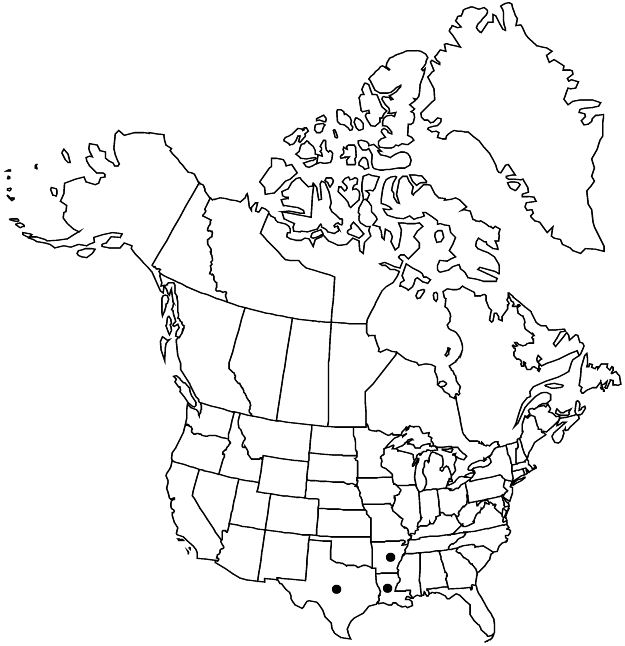Crataegus viridis var. velutina
J. Bot. Res. Inst. Texas 1: 1009. 2007.
Stems: trunk bark black, rough; 1-year old twigs gray. Leaves: blade ± lanceolate to narrowly ovate, broadly elliptic, or oblanceolate, 3–5 cm, thin, base rounded-cuneate, lobes 0 or obscure, margins serrulate-crenate, mainly in distal 2/3, sometimes entire, teeth 1 mm, venation craspedodromous, sometimes semicamptodromous, veins 3–7 per side (often dividing before margin), apex acute to subacute, surfaces silky young, variably glabrescent, except abaxially with hair tufts in vein axils. Inflorescences: branches densely pubescent young, sparsely scabrous-pubescent by anthesis. Flowers: hypanthium hairy.
Phenology: Flowering Apr; fruiting Sep–Oct.
Habitat: Moist, fertile, alluvial woodlands, agricultural derivatives of these
Elevation: 10–200 m
Distribution

Ark., La., Tex.
Discussion
Variety velutina is concentrated in western Arkansas, western Louisiana, and eastern Texas. Similar forms that are less velutinous when young are found in Florida.
Variety velutina is easily recognized in young foliage and at anthesis; it has virtually no intermediates with the glabrous varieties of Crataegus viridis. By anthesis, the adaxial leaf surfaces are usually only sparsely hairy and by fruiting they are usually glabrous. The strong tendency to glabrescence may explain the relatively small percentage of fruiting specimens noted for this variety.
Selected References
None.